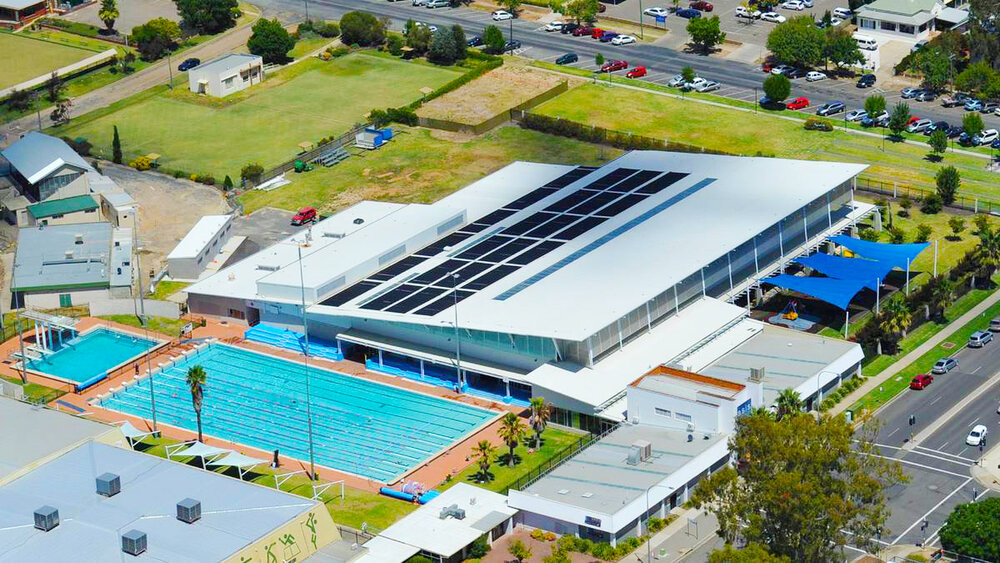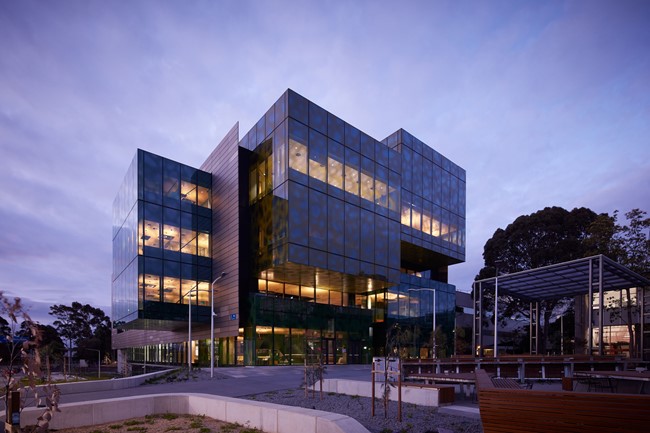Net Zero Energy Buildings (NZEB)
Australia has agreed to target Net Zero by 2050. Essentially, this refers to carbon emissions reductions to meet a ‘new normal’ of Net Zero carbon emissions by 2050 for the country as a whole. An enormous task. It is universally agreed that it will require a mix of technological innovation and strong governance at Local, State and Federal levels to achieve this ambitious goal.
The concept of Net Zero Energy is very sound. However, it is always not easy to achieve and usually costs more upfront.

A Net Zero objective challenges all of us to find ways to ensure a building is well insulated and well ventilated, deploying the highest rated energy efficiency measures available. This opens the door to new and innovative energy and energy efficiency technologies. It can establish a platform for developing a new culture within an organisation by highlighting the importance of helping to reduce the levels of CO2 being emitted into the atmosphere. A building can become a ‘statement of intent, displaying that a Council, company, or individual cares about the environment and is prepared to invest in a clean world future.
A good place to start is to consider what Net Zero actually means. Please refer to a formal definition of Net Zero which appears at the bottom of this page.
To meet the meaningful definitions of Net Zero, there can be NO GAS used in a building. Buildings of the future must be designed and built to be all electric and be run from green electricity; either generated onsite via solar PV, or purchased from the grid. Load shifting, via battery storage or thermal energy storage, can be applied. Buildings can be built to a very high green star standard and use very limited energy for heating and cooling, thus reducing the offsite energy required. Better insulation and windows can reduce energy costs substantially, but also come at a cost.
How to attain a cost-effective mix of technologies, including hardware (windows & other materials) and heating/cooling systems etc, is the challenge. We undertake in-depth engineering and cost analysis to achieve optimal results. We offer a review of proposed materials and make suggestions for energy efficiency improvements of the building envelope prior to determining the appropriate energy and HVAC system requirements.

Building to a Net Zero Energy Standard
As a start to establishing a Net Zero environment we must start with individual buildings. Focussing on how we can make our office block, aquatic centre, house, factory etc operate on a Net Zero energy basis is critical if we are to establish Net Zero Communities. This is the real challenge.
By setting a Net Zero target we can achieve two core objectives:
Enabling all stakeholders and people associated with a built form project to ‘take on the Net Zero’ challenge and be a part of something exciting
Make a real difference to our operating environment by minimising the operational cost of a building and reducing the energy footprint of our building
If everyone focussed on this, we would end up with whole new suburbs and satellite cities that are Net Zero Energy. Thereby, cutting our use of fossil fuels by 100% and eliminating carbon emissions derived from our building’s operation. We would be displaying to others what is possible, and when this happens, people tend to feel more comfortable following in our footsteps. Prove it works, and others will follow. This is how our company works, enjoying when we find people who help us stay ahead with new technologies and exciting innovations. A culture of Net Zero Energy provides us with an edge. Above all, it makes us feel better about what we do.
Net Zero Energy Precincts
For precincts, such as major housing estate developments, university campuses and multi-use commercial centres, the Net Zero challenge can be effectively addressed with whole-of-precinct energy modelling. Integration and sharing of the energy infrastructure and simulated green star targets can provide exceptional outcomes. This requires support from all stakeholders, including State and Local governments, energy utilities and developers.
Ground Source Heat Pumps and their associated precinct geothermal systems can significantly reduce building energy requirements. Thus, leveraging solar and electrical storage technologies further than conventional systems such as gas and/or conventional electric. Peak load requirements precinct-wide can be reduced by over 35%, alleviating pressure on the grid and assist in achieving Net Zero Energy more readily than any other available systems. Increases in grid capacity that are forced upon estates seeking to be ‘all-electrical’ in a conventional manner, become unnecessary.
At Direct Energy Australia, we can design and install precinct scale systems and have set our company up to deliver very large-scale systems that make a big impact on grid supplied energy. A typical +75% of grid supplied energy reduction can be realised with a proven combination of technologies. This can occur at both small and large scale when integrated smartly within a large housing estate, commercial centre or campus.
Developers must have clear goals and be able to undertake the extra work that is required to coordinate and manage a Net Zero result. This requires an innovative focus and a dedicated development team.
We offer complete engineering support services for those developers and building owners who want to achieve Net Zero outcomes and have the option of becoming an energy utility shareholder.
Contact us directly for a discussion on how your next development or building/precinct energy revitalisation can integrate a Net Zero Energy target. You will engage in real outcomes that will make a difference to your bottom line and establish a Net Zero Energy culture in your organisation from the top down.
Net Zero Definitions
Net Zero Energy Buildings (NZEB) refer to those buildings that produce at least as much energy as they consume. There are different classes of Net Zero buildings. All are seeking to reduce the carbon emissions from their operation to ‘zero’: carbon neutral or carbon positive. See below
A sound definition of Net Zero buildings has been developed by the National Renewable Energy Laboratory (NREL) in the USA. It highlights four (4) classes of Net Zero Energy Buildings. Essentially, a net-zero energy building is a residential or commercial building usually with greatly reduced energy needs. In such a building, efficiency gains have been made such that the balance of energy needs can be supplied with renewable energy technologies.
The concept of Net Zero Energy is very sound. However, it is always not easy to achieve and usually costs more upfront.
A Net Zero objective challenges us to find ways to ensure a building is well insulated and ventilated, deploying the highest rated energy efficiency measures available. This opens the door to new and innovative energy and energy efficiency technologies. It can establish a platform for developing a new culture within an organization by highlighting the importance of helping to reduce the levels of CO2 being emitted into the atmosphere. A building can become a ‘statement of intent, displaying that a Council, company, or individual cares about the environment and is prepared to invest in a clean world future.
Types of Net Zero Energy Buildings
A buildings generate and use energy through a combination of energy efficiency and Renewable Energy collected within the building footprint. These buildings can qualify as site because of their use of on-site RE resources
B buildings generate and use energy through a combination of energy efficiency, Renewable Energy generated within the footprint, and Renewable Energy generated within the site. These buildings can qualify as site because of their use of on-site Renewable Energy resources.
C buildings use the Renewable Energy strategies as described for NZEB:A and/or NZEB:B buildings to the maximum extent feasible. These buildings also use Option 3, off-site renewable resources that are brought on site to produce energy.
D buildings use the energy strategies as described for NZEB:A, NZEB:B, and/or NZEB:C buildings. On-site renewable strategies are used to the maximum extent feasible. These buildings also use Option 4, purchasing certified off-site Renewable Energy such as utility-scale wind and Renewable Energy Certificates from certified sources
